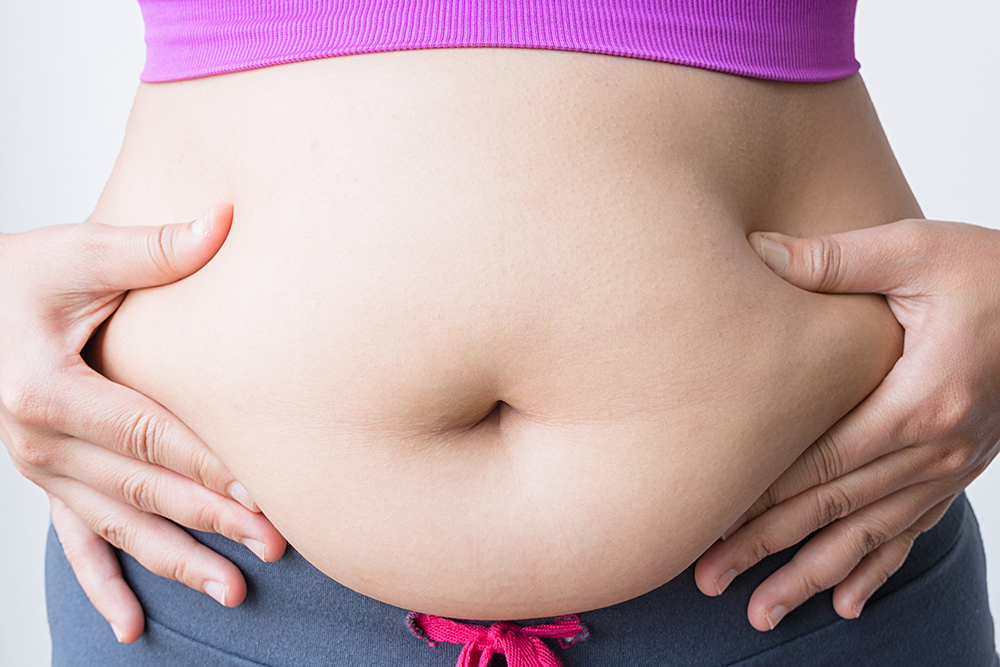High Fiber Diet Plan to Lower Cholesterol and Lose Weight

Do you have high cholesterol? Increase your fiber!
Do you have high blood pressure? Increase your fiber!
Are you overweight? Increase your fiber!
What is it with fiber (also known as roughage)? It seems to play a role in just about all our health problems. Well, as far as blood pressure and cholesterol go, dietary fiber binds to cholesterol in circulation and helps remove it from the body. Research has shown that for every 1-2 grams of daily soluble fiber intake, LDL (bad) cholesterol is lowered 1%.
On the weight control side of things, a high fiber diet plan increases satiety (how full you feel), aiding efforts to lose weight and/or maintain a healthy weight.
4 Things You Need to Know to Use Dietary Fiber to Lower Cholesterol:
1. There are two types of fiber.
Fiber Insoluble
Insoluble fiber remains relatively intact as it passes through the digestive system. The primary function of insoluble fiber is to move waste through the intestines and maintain intestinal acid balance.
Fiber Soluble
Soluble fiber is the type of fiber responsible for lowering total cholesterol and LDL (bad) cholesterol levels.
2. Sources of insoluble fiber
Fruit skins and root vegetable skins
Vegetables (green beans, celery, cauliflower, zucchini, beets, turnips, potato skins, and dark green leafy vegetables)
Wheat and whole-wheat products
Wheat oats
Corn bran
Seeds and nuts
3. Sources of soluble fiber
Oat and oat bran
Legumes (dried beans and peas)
Nuts
Barley, rye
Flaxseed
Fruits (i.e. oranges, apples, prunes, plums, berries)
Vegetables (i.e. carrots, broccoli, potatoes, sweet potatoes, onions)
Psyllium husk
Shoot for 25-35 grams of dietary fiber everyday. Of this fiber, soluble fiber should make up 15 grams. The average US dietary fiber intake is 12-18 grams/day.
If your current diet is very low in dietary fiber, don’t increase to 35 grams overnight. A sudden increase will result in gastrointestinal (stomach) distress and unpleasant side effects (flatulence and diarrhea). You want to increase your fiber intake gradually.
Bottom Line:
Select high fiber foods, especially foods that contain soluble fiber. I once heard a gastroenterologist say he would be out of a job if everyone just ate more beans!
February is American Heart Month. In recognition of American Heart Month you can access Heart Health Made Easy at a 25% savings. Learn more about this take action guide to lower cholesterol and blood pressure at http://www.hearthealthmadeeasy.com.
All the best,
Lisa Nelson RD
Reduce Heart Failure with Weight Loss and Activity
 The Physician’s Heart Study followed over 21,000 between the ages of 40 and 84 for over 20 years. They found a significant link between weight, activity, and heart failure I want to share with you.
The Physician’s Heart Study followed over 21,000 between the ages of 40 and 84 for over 20 years. They found a significant link between weight, activity, and heart failure I want to share with you.
Both weight and physical activity were independently linked to risk of heart failure.
Weight
Having a high BMI increased heart failure risk in both active and sedentary men. For every additional 7 pounds on a man 5 foot 10 inches tall, risk for heart failure increased 11%.
Physical Activity
Vigorous physical activity reduced heart failure risk in lean, overweight, and obese men. Men that exercised vigorously only 1-3 times a month reduced their heart failure risk 18%. The more frequent and vigorous the exercise the greater the benefit. Very active men, exercising vigorously 5-7 days per week reduced heart failure risk 36%.
The combined risk of obesity and physical activity is substantial. When compared to lean men who were vigorously active 1-3 each month risk of heart failure increased 19% for men that were lean (BMI less than 25), but inactive, 49% in overweight active men, 78% in overweight inactive men, 168% in obese active men, and 293% in obese inactive men.
Key point I want you to take from this post:
This study shows a little activity has substantial benefits. By being vigorously active just 1-3 days each month you can cut your risk 18%.
Get moving!
February is American Heart Month. In recognition of American Heart Month you can access Heart Health Made Easy at a 25% savings. Learn more about this take action guide to lower cholesterol and blood pressure at http://www.hearthealthmadeeasy.com.
All the best,
Lisa Nelson RD
Be Heart Healthy and Lose Weight
Weight Loss – How Stress and Cortisol Affect Weight Loss

Do you struggle with extra fat around your midsection? Excess abdominal fat is not only visually unappealing to some, but it increases your heart disease risk.
What causes abdominal obesity?
There are many different reasons your body likes to store fat in the abdomen. I want to discuss one possibility – cortisol.Cortisol is a hormone made by the adrenal glands in the kidney. Cortisol levels are highest in the morning. Through gluconeogeneis (term for glucose production), cortisol breaks down muscle to provide the body with needed glucose for energy needs. Cortisol also relocates fat cell deposits into the visceral cavities of the abdomen.
When we are confronted with stress our body’s initial response is “fight or flight”. When we go into “fight” mode our body releases the hormone norepinephrine. When we respond with “flight” (or anxiety) our body releases epinephrine. If the stressful situation is long term and you begin to feel distressed and defeated, the hypothalamus in the brain becomes involved, eventually leading to the release of cortisol from the adrenal gland in the kidney.
Why is “fight or flight” important to understand?
Your perception of an event can determine your body’s physical response. Do you feel stressed, but challenged by an obstacle or do you feel overwhelmed and out of control? If you feel challenged and “fight” your body responds with an accelerated heart rate that increases the release of fatty acids into circulation. If you feel out of control and defeated (“flight”), the body increases fat formation (lipogenesis), breakdowns tissue (muscle), suppresses the immune system, and increases visceral fat deposits.
What is visceral fat?
Visceral fat is the fat around and between your organs. Subcutaneous fat is the fat layer beneath your skin.
Excess visceral fat leads to the “beer belly” effect (also referred to as the “apple” shape). Visceral fat is connected to insulin resistance and glucose intolerance (linked to diabetes), high cholesterol, high blood pressure, and heart disease.
Are you at risk?
Get out a tape measure.
Wrap the tape measure around your abdomen at the level of your navel (belly button). Make sure the tape measure is level all the way around (you may need extra hands). Resist the temptation to cinch in the tape measure for a lower number, instead hold the tape measure lightly against your skin.
Men – A waist measurement of 40 inches (102 cm) or greater equal’s abdominal obesity.
Women – A waist measurement of 35 inches (88 cm) or greater equal’s abdominal obesity.
How to reduce stress for minimal impact on abdominal fat and heart disease risk?
Stress is a part of living, but you can take steps to reduce your stress levels.
Physical activity, especially aerobic activity, is a great stress management tool. Activity releases the “feel good” hormone serotonin to help combat the negative effects of long term stress. As an added bonus, you burn calories to shed the extra layer of fat.
p>Additional interventions to reduce stress include deep breathing, progressive relaxation, meditation, and visualization. Don’t be afraid to step out of your comfort zone and try something new that may be effective at reducing your stress levels. Getting enough sleep and making healthy food choices are two additional steps to promote stress management.
Be sure to get a copy of the special report Stop Wasting Money – Take Control of Your Health to start on the path to heart health and weight loss!
Heart Health and Weight Loss – How much fat do you need?

I want to talk about the fat in your diet. When it comes time to lose weight one of the first steps is to switch to a low fat diet. I want to caution you not to drop your fat intake too low. Yes, you need to watch the fat calories, but some fat is needed everyday for optimal health.
Fat is an essential component of a healthy diet providing energy and the fat soluble vitamins A, D, E, and K. Some types of fat even reduce your risk for certain chronic diseases, such as heart disease.
What’s important is the amount and type of fat. I recommend restricting fat intake to ~30% of your total daily calories. This would mean if you are consuming 1500 calories per day, 450 calories or 50 grams would come from fat sources.
Now, you need to make sure these fat sources are healthy. Here are examples of healthy fat sources to include in your diet in moderation:
Olive oil
Avocados
Seeds
Nuts
Peanut butter
Fish
Some fat in your diet actually promotes weight loss by helping you feel full longer, decreasing your likelihood to snack too much and overeat!
February is American Heart Month. In recognition of American Heart Month you can access Heart Health Made Easy at a 25% savings. Learn more about this take action guide to lower cholesterol and blood pressure at http://www.hearthealthmadeeasy.com.
All the best,
Lisa Nelson RD
Be Heart Healthy and Lose Weight
Physical Activity – How much do you really need?
As I previously mentioned, The Health and Human Services Department sets physical activity guidelines after reviewing a good decades worth of research related to physical activity and health.
This report encompasses everyone from the age of 6 and up. Let’s go into a little more detail on the adult guidelines.
Adult Physical Activity Guidelines
- All adults should avoid inactivity. Any type of activity is better than nothing. Adults who include activity as part of their everyday life gain some form of health benefit.
- To see substantial health benefits, include at least 150 minutes (2 ½ hours) per week of moderate-intensity activity. If times a factor, you can see the same benefits by bumping up the intensity and being vigorously active 75 minutes (1 hr. 15 min.) each week.Yes, it is still okay to break your activity into chunks.For example, if your schedule doesn’t allow 30 minutes at the gym, you can include a 10 minute brisk walk during lunch break to count towards the goal of 150 minutes for the week. However, workout segments less than 10 minutes in length are not as beneficial.
Also, the most benefit is seen by spreading your activity throughout the week. If you’re tempted to hit the gym for a power workout session on a Saturday for 2 ½ hours, that is not as beneficial as 30 minutes of activity 5 days out of the week. But, remember, any form/amount of activity is better than nothing!
- If you want to take things to the next levels, more extensive health benefits are seen when activity is increased to 300 minutes (5 hours) per week of moderate intensity activity or 150 minutes of vigorous intensity aerobic activity.
- Don’t forget strength training! You want to include all major muscle groups on two or more days each week. Especially beneficial as we age and see a decline in metabolism (and corresponding weight gain) if muscle mass is not maintained.
Now, don’t let yourself be overwhelmed and give up without even attempting to meet these guidelines. Activity does not have to be hard or expensive. You can walk your dog, go dancing, climb the stairs at work, mow the lawn, and go to the gym. There are many, many options available to get 2 ½ hours of physical activity every week.
All the best,
Lisa Nelson RD
Best Way to Lose Pounds – 9 pounds every 11 days?
Losing weight is not easy, so when you see a headline like the one above you want to believe it can be done. Unfortunately, I am here to tell you it is not that simple. The best way to lose pounds is usually not a quick and easy fix.
This article was triggered by the following question:
“hi… when you have time, will you check out fatloss4idiots and see if you think it’s for real?? I saw this link advertised off to the side, was curious and looked at it… you have to pay to see the diet but they explain how it’s supposed to work and was wondering if it sounds legit to you….
If one person has this question, I am sure many of you do, too. I am going to give you the tools you need to spot what’s known as a "fad diet" on your own.
Fad Diet Defined
A fad diet is an eating plan that quickly surges in popularity and tends to just as quickly fizzle out. Most fad diets are unbalanced meal plans that lead to weight gain when you go off the diet. Fad diets tend to be cyclical. For example, the Atkins diet was created in the 1970’s and made a recent comeback.
Fad Diet Identified
Ask yourself the following 11 questions when evaluating a diet program.
- Does it promise a quick fix?
- Do the claims sound too good to be true?
- Is a list of "good" and "bad" foods given?
- Are recommendations made to help sell a product?
- Does it list dire warnings of dangers from a single product or regimen?
- Are the recommendations based on a single study?
- Do you have to eliminate one or more of the five food groups to gain promised results?
- Are simple conclusions drawn from a complex study?
- Are there dramatic statements refuted by reputable scientific organizations?
- Are the recommendations based on studies not reviewed by other researchers?
- Do the claims ignore differences among individuals or groups?
If the answer is "yes" to any of these questions, then you are probably dealing with a fad diet.
When you review fatloss4idiots, you will see quick fix promises, claims that sound too good to be true, and very little information related to the science behind why the plan works.
Fad Diet Examples
There are hundreds of fad diets on the market. Here are some common examples:
Atkins
Cabbage Soup Diet
3 Day Diet
South Beach Diet
Grapefruit Diet
Macrobiotic Diet
Low Carb Diet
Zone Diet
Successful Diet Plans
A good plan will teach you to make healthy food choices (everything in moderation), along with an activity component. Weight loss and physical activity go hand in hand.
Stop thinking – "diet". A "diet" implies short term changes. If you want to be successful with weight loss you need to find a plan you can stick with long term. Start focusing on next year instead of next month. Successful weight loss requires change and change is never easy. You need to start with small, permanent steps to achieve long-term weight loss.
If it sounds too good to be true – it is!
Learn about the best way to lose weight by visiting https://www.lisanelsonrd.com/loseweight.shtml.



